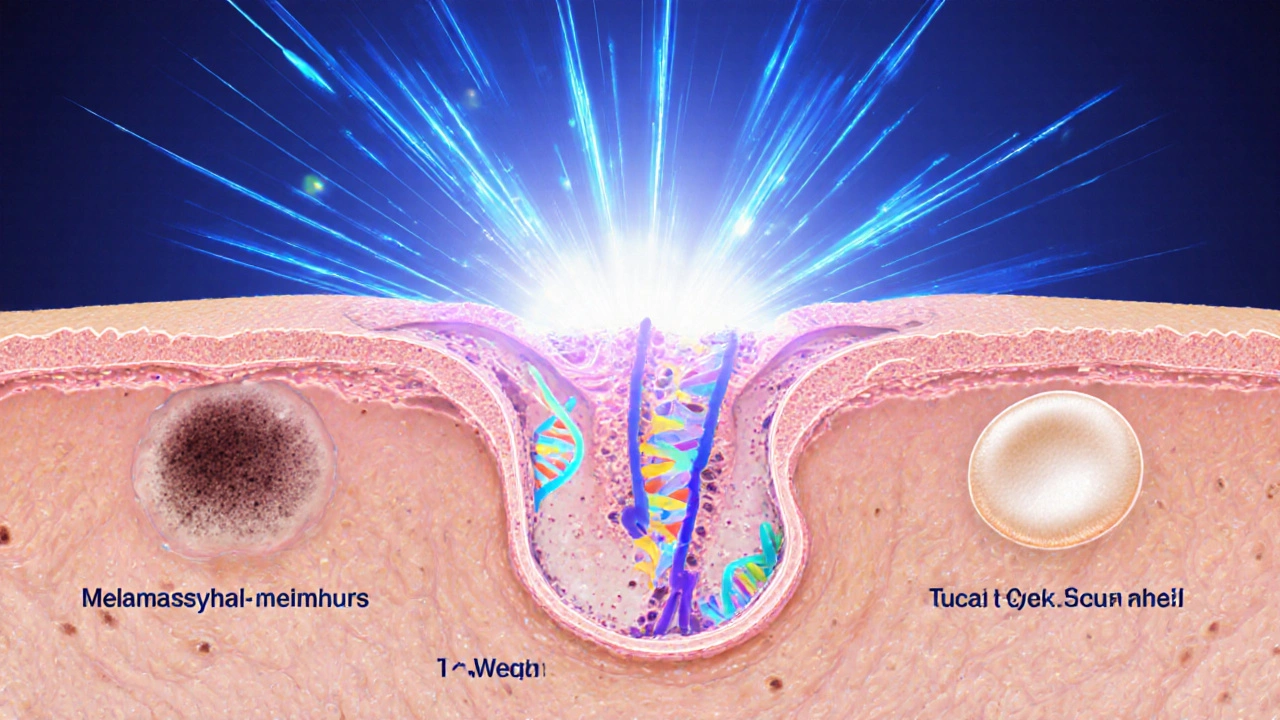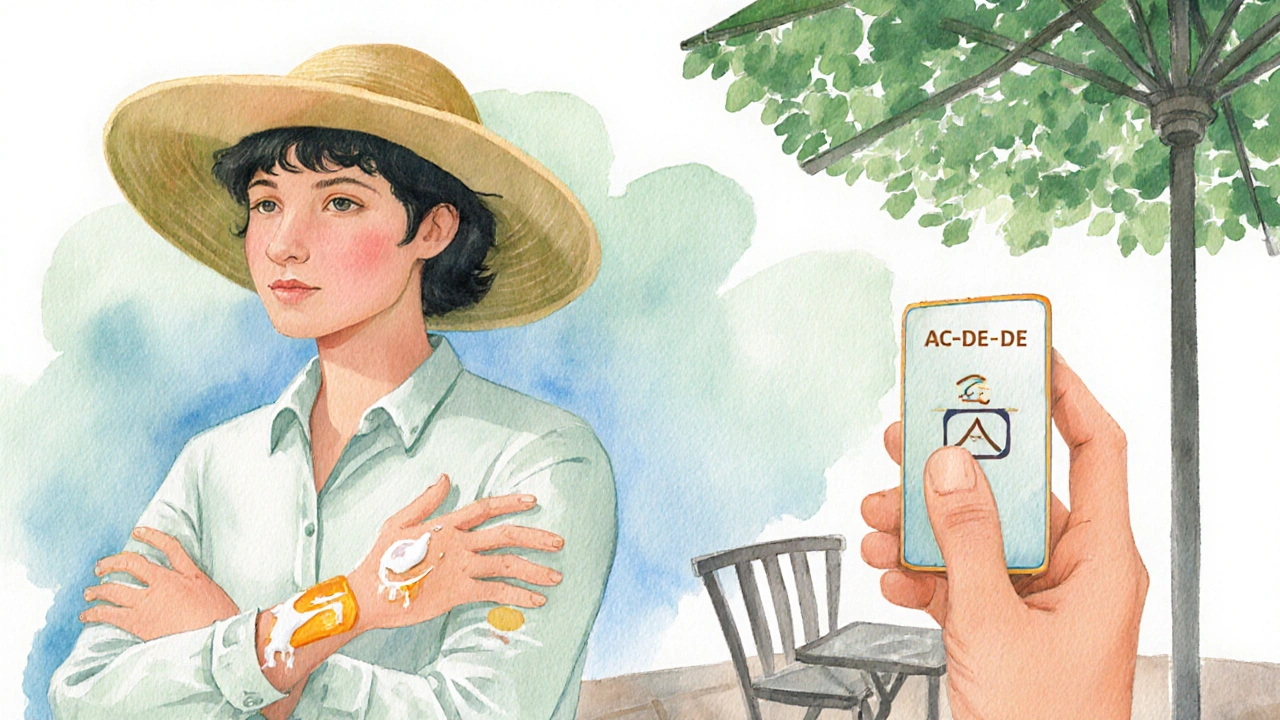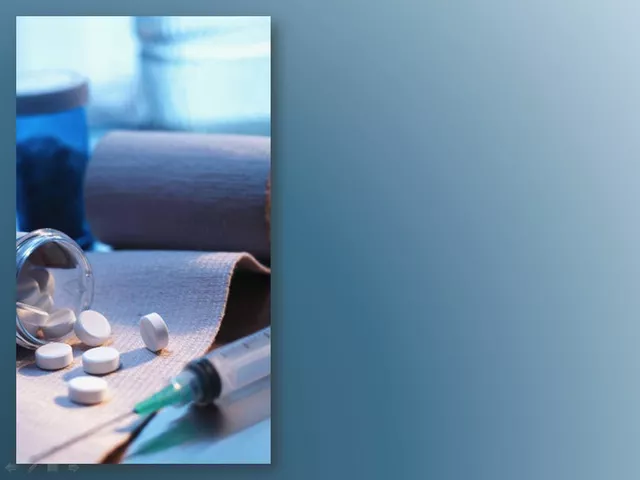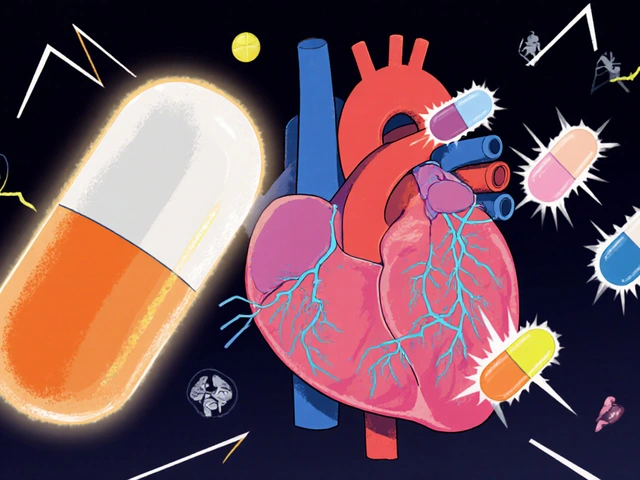
Sunburn Risk Assessment Tool
Your Risk Assessment
Enter your information and click "Calculate My Sunburn Risk" to see your personalized assessment.
Key Takeaways
- Repeated sunburns increase the risk of all three major skin cancers.
- UV‑B rays cause DNA damage that can turn into cancer over years.
- Melanoma, basal cell carcinoma, and squamous cell carcinoma each have distinct warning signs.
- Using broad‑spectrum SPF 30+ sunscreen and protective clothing cuts risk dramatically.
- Early detection saves lives - know the signs and get checked regularly.
When you spend a day at the beach and feel that sting on your shoulders later, you’ve just experienced Sunburn is an acute inflammatory reaction of the skin caused by excessive exposure to ultraviolet (UV) radiation. It feels painful, turns red, and sometimes peels, but the danger doesn’t end once the redness fades. The real story is how those burnt cells can set the stage for sunburn and skin cancer over time.
Understanding Sunburn
Sunburn is more than a tan gone wrong. The skin’s outer layer, the epidermis, contains melanin - a natural pigment that absorbs UV rays. When UV exposure exceeds what melanin can handle, the DNA inside skin cells gets damaged. The body reacts by increasing blood flow (the redness you see) and sending inflammatory chemicals to repair the damage. If the damage is too great, cells can die or mutate.
How UV Radiation Damages Skin
UV radiation comes in three flavors: UVA, UVB, and UVC. The Earth’s ozone blocks most UVC, leaving UVA and UVB to reach us. UV Radiation is electromagnetic energy from the sun that penetrates skin and can alter cellular DNA. UVB is the chief culprit for sunburn and directly damages DNA by forming pyrimidine dimers - tiny knots that prevent normal replication. UVA penetrates deeper, generating reactive oxygen species that indirectly harm DNA and break down collagen.

What Is Skin Cancer?
Skin cancer describes uncontrolled growth of abnormal skin cells. It comes in three main forms, each linked to UV exposure to varying degrees. Skin Cancer is a group of malignant tumors that arise from skin cells, often triggered by DNA damage from ultraviolet light. While everyone’s skin can develop cancer, the risk skyrockets for people who burn easily and accumulate multiple sunburns over their lifetime.
Types of Skin Cancer and Their Sun‑Exposure Connection
| Type | Typical Appearance | Link to Sunburn | Mortality Rate |
|---|---|---|---|
| Melanoma is the deadliest skin cancer arising from melanocytes | Asymmetric mole, varied colors, border irregularities | Strong - especially intermittent intense burns | High if diagnosed late (≈ 10% of skin‑cancer deaths) |
| Basal Cell Carcinoma is a slow‑growing tumor from basal cells in the epidermis | Shiny pearly nodule, may ulcerate | Moderate - cumulative chronic exposure | Very low (rarely metastasizes) |
| Squamous Cell Carcinoma is a cancer of the squamous cells, often on sun‑exposed areas | Rough, scaly patch or sore that won’t heal | Strong - linked to repeated burns and chronic UV | Intermediate (can spread if untreated) |
The Scientific Link: From Sunburn to Cancer
Every sunburn episode creates DNA lesions. If the body’s repair mechanisms - primarily the nucleotide excision repair pathway - fix the lesions correctly, the cell survives without issue. However, researchers have shown that with repeated UV hits, repair systems become overwhelmed, leading to permanent mutations. One key player is the P53 Gene is a tumor‑suppressor gene that halts cell division when DNA is damaged. UV‑induced mutations often disable p53, allowing damaged cells to keep multiplying, which is a stepping stone toward cancer.
Studies from the International Agency for Research on Cancer (IARC) in 2022 estimate that roughly 90% of melanoma cases and over 80% of non‑melanoma skin cancers are attributable to UV exposure. The risk isn’t linear; a single severe blistering burn in childhood can double the melanoma risk later in life, while frequent mild burns add up cumulatively.

Prevention Strategies That Really Work
Knowing the link is only half the battle - acting on it saves lives. Here’s a practical checklist:
- Apply broad‑spectrum sunscreen with at least SPF 30. SPF is Sun Protection Factor, a measure of how long sunscreen protects against UVB rays. Reapply every two hours, or after swimming.
- Seek shade between 10am and 4pm when UV intensity peaks.
- Wear protective clothing - long sleeves, wide‑brim hats, and UV‑blocking sunglasses.
- Avoid tanning beds; they emit UVA‑rich light that also damages DNA.
- Check your skin monthly. Use the ABCDE rule for moles (Asymmetry, Border, Color, Diameter, Evolving).
- Consider vitamin D supplementation if you limit sun exposure, after consulting a doctor.
Early Detection & When to See a Doctor
Spotting skin cancer early dramatically improves outcomes. Schedule an annual skin exam with a dermatologist, especially if you have a history of sunburns, a fair complexion (Fitzpatrick skin types I-II), or a family history of melanoma.
Alert signs include:
- New or changing mole that looks irregular.
- Persistent sore or bump that bleeds, crusts, or doesn’t heal.
- Red, scaly patches on sun‑exposed areas.
Bottom Line
The bottom line is clear: every sunburn is a tiny reminder that your skin’s DNA is taking a hit. Over years, those hits add up and can transform into melanoma, basal cell carcinoma, or squamous cell carcinoma. By using sunscreen, seeking shade, dressing smart, and checking your skin regularly, you can break the chain and keep your skin healthy for life.
Frequently Asked Questions
Does a mild sunburn increase skin‑cancer risk?
Yes. Even mild burns cause DNA lesions. Repeated mild burns over years can accumulate enough damage to raise the risk of basal and squamous cell carcinomas.
How often should I reapply sunscreen?
Reapply every two hours, or sooner if you’re swimming, sweating, or towel‑drying. Even water‑resistant formulas lose effectiveness after a while.
Can sunscreen prevent melanoma?
Regular use of broad‑spectrum SPF 30+ sunscreen has been shown in studies to cut melanoma incidence by up to 50% in high‑risk groups.
Is tanning in a sunlamp safer than natural sun?
No. Tanning beds emit concentrated UVA radiation, which also damages DNA and is linked to higher melanoma risk, especially in younger users.
What’s the best way to perform a self‑skin check?
Use a full‑length mirror and a hand‑held mirror to inspect every area, including scalp, between toes, and behind ears. Follow the ABCDE rule for moles and note any new or changing spots.
13 Comments
Write a comment
More Articles

Revitalize Your Body and Mind with Jalap: The Dietary Supplement You Can't Miss!
Dive into the world of Jalap, a remarkable dietary supplement that promises to enhance both your body and mind. Discover how Jalap, derived from the roots of a traditional plant, can rejuvenate your health with its natural properties. Learn about its benefits, uses, and why it's becoming a go-to remedy for those seeking a holistic lifestyle. Find out how Jalap can fit into your daily routine and what sets it apart from other supplements.

Flunarizine interactions with other medications: A guide for patients
Well, folks, let's dive into the exciting world of Flunarizine interactions! A medication often used for migraines and vertigo, Flunarizine is as social as a prom queen at a high school reunion, mixing and mingling with other drugs in your system. It's like a cocktail party, but in your body! Now, this party can turn into a bummer if mixed with alcohol or antihypertensives, potentially causing dizziness or even fainting. So, as always, it's important to chat with your doctor about all the medications you're taking, to ensure the party in your system stays fun and safe!

Rich Martin
October 10, 2025 AT 16:13Sunburn isn’t just a painful souvenir; it’s a ticking time bomb for skin cancer. You think a little redness is harmless, but the DNA damage is already happening beneath the surface. Think about the long‑term cost of treating melanoma versus slapping on sunscreen today. The risk calculator is a solid wake‑up call, especially for anyone with a fair complexion. So stop making excuses and start protecting your skin before it’s too late.